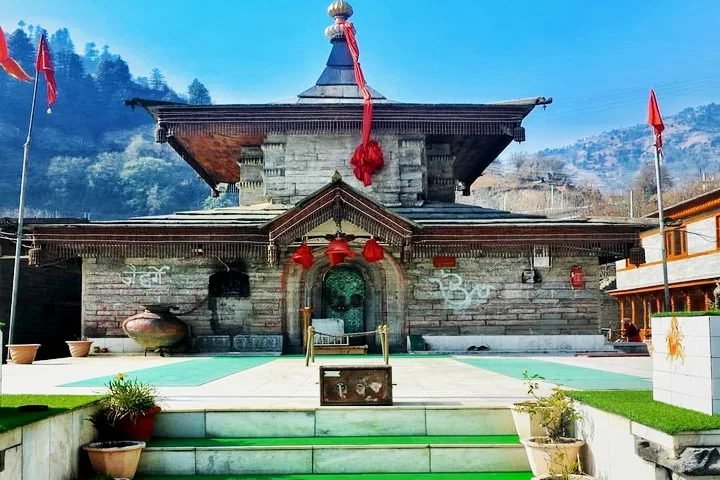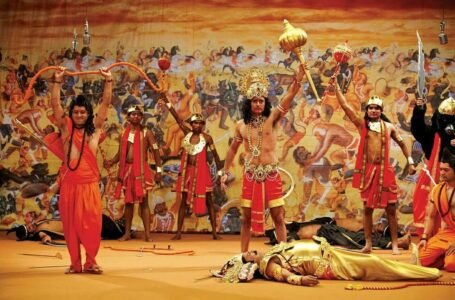Hateshwari Mata: The Divine Protector of Hatkoti

Himachal Pradesh, an area blessed with lush beauty and spiritual vibrancy, has several temples and shrines built to worship local and tribal deities. Among these stands, Hateshwari Mata Mandir in Hatkoti, located in the Jubbal region of Shimla district, is one of the most symbolic in divine energy and cultural heritage. Hateshwari Mata is worshipped as an incarnation of Goddess Durga, representing the essence of power, protection, and benevolence, very much into the belief of several local communities.
Surrounded by beautiful valleys and greenery, it is not just a place of worship but an edifice of culture displaying regional traditions and glorious architecture. Devotees from all of Himachal Pradesh and its adjoining areas visit this temple to seek blessings, offer prayers, and feel a touch of the divine aura surrounding Hateshwari Mata.
History and Legends of Hateshwari Mata
The origins of Hateshwari Mata are shrouded in myths and legends that describe her as the divine protector and nurturer. As per local belief, Hateshwari Mata is the more terrible avatar of Goddess Durga who came into being to save the region from enemies and look after her devotees. The temple is believed to have been built thousands of years ago and has therefore become a pillar of spiritual history in Himachal Pradesh.
Historical mentions suggest that it was built between the 4th and 6th centuries CE during the Gupta times, and was later modified by the rulers of the Jubbal princely state. The architecture of the temple features an amalgamation of Himachali and Gupta designs, with intricate carvings, fine wooden work, and a peaceful sanctum.
One of the interesting legends connected with Hateshwari Mata is that of the discovery of the idol. It is said that a shepherd passed that way while grazing his flock when he noticed extraordinary light shining quite close to him, coming from the ground. Upon closer investigation, he discovered the idol of Hateshwari Mata half-buried. The villagers revered it as sacred and decided to build a temple to house the idol, thereby creating a major shrine.
Mythological Significance
Hateshwari Mata, the Goddess, is that which gets in line with other deities, attributes of strength, courage, and maternal care. According to Hindu mythology, Goddess Durga is the universal mother who destroys evil to restore dharma (righteousness). She is perceived as a local guardian deity who safeguards the people of Hatkoti and the surrounding areas.
The temple also has connections with the Mahabharata, one of the ancient great Indian epics. The temple is believed to have been visited and worshipped by the Pandavas during their exile hoping for blessings. The presence of five stone idols near the temple representing the five Pandavas adds credence to this association, providing the shrine with additional mythological and historical significance.
The flowing Pabbar River near the temple is believed to be blessed and elevates the spiritual effectiveness of this place. Devotees perform respective rituals and go to the holy water to be blessed and cleansed before stepping foot inside the temple.
Architectural Marvel and Sacred Atmosphere
Built-in ancient Indian architectural style, the Hateshwari Mata Temple showcases the skills and devotion of the craftsmen associated with it. Inside the sanctum sanctorum is an idol of Hateshwari Mata, adorned with flowers, ornaments, and a silver crown, the entire idol glowing radiantly with divinity. The walls of the temple and pillars are profusely carved with deities, celestial beings, and mythological tales depicting the artistic excellence of yesteryears.
Within its precincts lies a myriad of smaller shrines dedicated to other deities, which altogether bring a definite sense of spiritual wholeness to the visitors. The spiritual ambience, the soothing chants, and the aroma of incense provide a haven of meditation and contemplation.
The temple draws large crowds during the annual Navratri festival, in honour of Goddess Durga. The shrine is brightly adorned and several special rituals are offered in honour of Hateshwari Mata during this time. Thousands of devotees flock together during the festival to celebrate the victory of good over evil and solicit blessings from the goddess.
Cultural and Spiritual Impact
Hateshwari Mata occupies an exalted space in the hearts of Himachal Pradesh. She is a deity, but not because of is just one more mouth to feed; she is an embodiment of cultural identity and spiritual resilience in the territory. The temple is a community gathering place that binds the people and unites them in faith.
Protection and the harvest are, therefore, the two forces that Hateshwari Mata invokes in the agrarian community of this sector. She showers her blessings upon farmers wishing for prosperity and protection from natural calamities. Her guardianship goes so far that she is also looked upon as a saviour by travellers and pilgrims to ensure safe passage on their journeys.
It is not just the faith and devotion that surround the temple, but also the encouragement of maintaining traditional Himachali art and architecture and rituals. The abundance of woodwork, stone carvings, and overall temple design preserves the lavish heritage and culture of the region.
Hateshwari Mata and Tribal Beliefs
The worship of Hateshwari Mata is not limited to mainstream Hindu practices but also encompasses tribal traditions of Himachal Pradesh. The local and tribal communities believe that she is a manifestation of the spirits of their ancestors and the divine powers of nature. This syncretic approach of coming together and exercising their faith shows the spirit of inclusiveness and adaptability of faith in the region.
The rituals of the tribes often involve offerings of grains, fruits, and symbolic objects and represent their close connection to nature. Hence the temple exists as a meeting point with diverse cultural inclinations giving depth to enriching experiences for devotees and visitors alike.
Pilgrimage and Tourism
Hateshwari Mata temple is a pilgrimage that attracts devotees from all across India. Nestled in serene surroundings, its historical and spiritual significance ensures it is a must-see outpost for people seeking solace and divine blessings.
The journey to Hatkoti is an experience itself, with breathtaking views of the Himachali landscape, which is dotted with spectacular apple orchards, deep pine forests, and quaint villages. The proximity of the temple to other tourist spots, such as Rohru and Jubbal, makes it even more attractive as an important centre for spiritual tourism.
Local administration’s efforts to promote the temple and improve the infrastructure have enhanced its accessibility and popularity by ensuring the tradition of Hateshwari Mata continues to thrive.
Conclusion
Hateshwari Mata, the divine protector of Hatkoti, embodies unending faith, power, and cultural expression. The temple, besides its historical significance and spiritual brightness, serves as a bridge between the eternal world of the divine and the inner depths of mankind.
In Himachal Pradesh, Hateshwari Mata is much more than a God; she is a protector and nurturer and a symbol of cultural identity. The Hateshwari Mata temple at Hatkoti inspires devotion and unity; it links ancient traditions with modern aspirations.
Devotees offer their prayers at the altar of Hateshwari Mata, steeped in the total divine atmosphere of this goddess, continuing her legacy such that her blessings and teachings become integrated into their lives. In the emerald, tranquil valleys of Himachal, where Nature and spirituality meet, the presence of Hateshwari Mata shines forth as a beacon of hope and divine grace.


